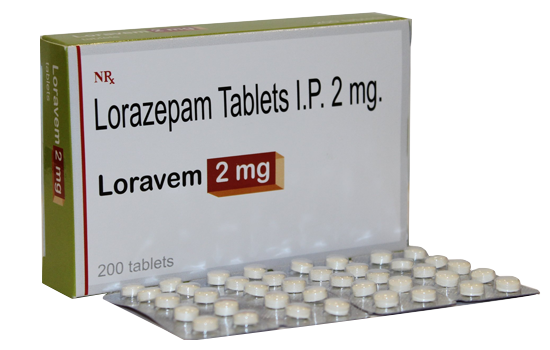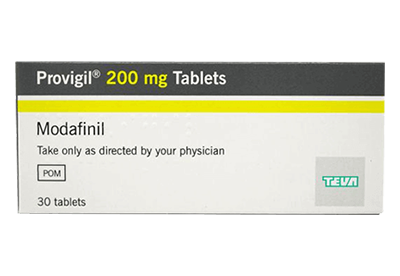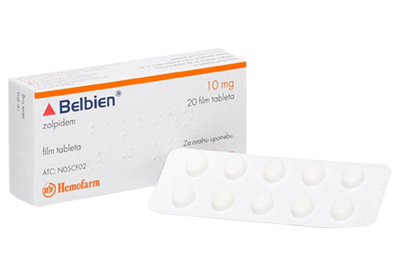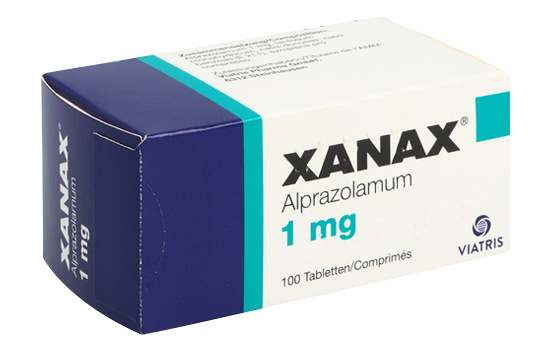
Lorazepam
This treatment is part of the benzodiazepine drugs class, which have been in use for decades across the globe. Commonly known by its branded name Ativan, it is used to treat different types of anxiety disorders. According to the WHO, an estimated 359 million people globally currently live with some form of anxiousness disorder. As only 27.6% of people suffering from these conditions actually seek treatment, increased awareness of treatment like lorazepam is essential.
£5.97 £3.77
Go to PharmacyMedications like lorazepam 2mg make it possible for people to manage these disorders. By combining medication with holistic health and lifestyle changes, patients can target the cause of the distress and put the building blocks in place to make a full recovery.
What is Lorazepam?
Also known under brand names such as Ativan or Temesta, lorazepam was first developed in the 1960s by a company called Wyeth Pharmaceuticals. Since then, it has quickly gained popularity as a reliable and solid choice in the family of benzodiazepines, for its calming effects on people struggling with anxiety or panic. Since its patent expired in 1985, it has become available as a generic, making treatment and anxiety management more affordable.
It's available in different strengths, with lorazepam 2mg being the most common. Lower strength dosages are available for especially mild cases, or elderly patients just starting treatment. It is available in the standard hard tablet form. In hospital settings, where quick relief is needed, it can be administered intravenously. Due to its excellent safety profile, lorazepam has established itself as a reliable and safe choice.
How Lorazepam Works
This treatment works by boosting the effects of a chemical called GABA — a neurotransmitter in the central nervous system. GABA sends signals between nerve cells, acting as the brain's brake pedal when anxiety or stress sets in. Once it is active, muscles loosen, racing thoughts slow down, and feelings of panic fade. Lorazepam attaches itself to these receptors, enhancing the effects, which helps it to slow down when things get too much.
Within just 30 minutes of taking lorazepam, effects start to be noticeable, which makes it a popular choice for quick relief, when panic becomes too much to handle. It offers 6 to 8 hours of relief from anxiety and the quick onset, along with its predictable effects also make it suitable for anxious patients prior to surgery.
Benzodiazepines
These treatments were first developed in 1955 by the Swiss pharmaceutical company Hoffmann-La Roche, and have since become a widely used tool to battle various conditions, such as anxiety, sleeping problems, panic attacks, and even alcohol withdrawal symptoms. These drugs work by boosting the effects of GABA on the brain, which helps ease sudden panic and anxiety.
A common use for benzodiazepines like lorazepam is in clinical settings, administered to patients before surgeries or dental procedures to ease nervousness and potential panic attacks. They're highly effective, as they stand out with their quick onset of effects and long half-life, which comes in handy for patients needing quick relief from acute episodes of panic and stress. Over 50 years after their introduction to the market, benzodiazepines like lorazepam remain one of the most effective ways to manage anxiety disorders.
Clinical Uses
This treatment is administered for a variety of clinical problems. Anxiety disorders are the main area, including both generalized anxiety and sudden panic. Lorazepam is also used for insomnia, when the cause is stress or tension. Doctors often use lorazepam as pre-medication before operations or dental procedures, to calm their patients.
Another important use is seizure control, since it can quickly reduce abnormal brain activity. Muscle spasms linked to anxiety can be treated with this medication. Besides these, lorazepam is also often used against symptoms of alcohol withdrawal, by reducing physical symptoms like shaking or trembling.
Lorazepam has undergone rigorous testing and years of use in clinical settings, making it a reliable treatment for clinical use. It's meant for short-term use, and is best taken alongside healthy lifestyle choices that help to reduce stress. This includes a healthy diet, regular exercise and staying active.
Benzodiazepine Comparison Chart
The National Institute of health classify benzodiazepines as a category of medicine that are essential for stopping seizures. They are also administered for a number of indications including anxiety, epilepsy, agitation and insomnia.
Lorazepam has a quick onset of effects within just 20-30 minutes, making it ideal for anxiety-caused insomnia, severe agitation, and sedation prior to surgeries or dental procedures. It lasts 6-8 hours and doesn't accumulate as much in the body as other benzodiazepines. Another lorazepam benefit is the lower risk of withdrawals or rebound insomnia when the medication is stopped.
Alprazolam has a similar onset time at around 30-60 minutes, with 4-6 hour window of effects. It's more widely used for GAD, PTSD, panic disorder, as well as symptoms of alcohol withdrawal. Users report it can cause feelings of euphoria, which is why it's sometimes used recreationally.
Diazepam has the slowest onset of action, taking around 1 hour. Uses include seizures, muscle spasms, alcohol withdrawal and insomnia. Although it has a lower overall risk profile, it has a longer half life.
| Drug | Onset of Action | Duration | Common Uses | Notes |
|---|---|---|---|---|
| Lorazepam | 20-30 min | 6 - 8 hrs | Anxiety disorder(GAD, PTSD & OCD), Insomnia due to anxiety, pre-procedure sedation, severe agitation | Preferred by elderly patients due to less risk of withdrawal or rebound insomnia |
| Alprazolam | 30-60 min | 4 - 6 hrs | Anxiety disorders (GAD, PTSD & OCD) and Panic disorder | Long term use may lead to memory problems |
| Diazepam | 60 min | 4 - 6 hrs | Anxiety disorders (GAD, PTSD, OCD) seizures, muscle spasms, Insomnia, alcohol withdrawal | Versatile treatment with long half-life |
Dosage and Administration
Lorazepam is commonly taken in the standard tablet form, but in hospital settings, for acute symptoms and sedation prior to medical procedures, intramuscular and intravenous injection are the preferred choice. The typical starting dose is usually 1-2 mg, taken two or three times a day, without exceeding the recommended maximum of 6 mg a day. Doctors may increase or decrease the dosage depending on the severity of the condition, or for elderly patients.
Lorazepam 2mg is often used for people suffering from nighttime anxiety and sleeping problems, as the 8-12 hours help patients get through the night more peacefully, without having the need to re-dose. It's important to note that, while lorazepam is an effective tool against anxiety, it should not be ended abruptly, as this may increase the chance of withdrawal symptoms like tremors or restlessness. A doctor can help guide through the process and assist in decreasing the dosage.
Safety and Potential Side Effects
As with any medication, there are a few aspects to be aware of before starting treatment using lorazepam. Most of the time, doctors recommend starting with smaller doses to see the body's reaction and how well the patient tolerates it.
Some of the most common lorazepam side effects are feeling tired or light dizziness, along with weak muscles. Headaches or an upset stomach are rarer, but can happen, depending on the individual. Older patients usually begin with smaller doses, as too high a dose can potentially cause confusion and increase the risk of falling.
Never mix lorazepam with alcohol or other sedatives, as they both calm the system and slow breathing. To best avoid any side effects, it's important to openly discuss one's medical history and any underlying health conditions with a healthcare expert, they can ensure safe usage and success of treatment.
Risks, Dependence and Precautions
Dependence is the biggest concern with lorazepam. Using it daily for weeks or months gets the body used to it, and suddenly stopping then leads to withdrawal symptoms like shaking, sweating, high anxiety, and sleepless nights. This is why most doctors recommend a dosage reduction strategy at the end of treatment.
People who have had problems with alcohol or drug misuse in the past need to be extra cautious, because the risk for them is much higher. Caution is also important in people with breathing issues or a weak liver, as lorazepam 2mg could stay longer in their system. During pregnancy, it's usually avoided, since it can affect the baby. Precautions are simple: keep the dose low, keep treatment time limited, and always taper the dosage at the end of treatment.
Price of Lorazepam
The price depends a lot on strength and pack size. Brand versions usually cost more, while generic lorazepam tablets are cheaper, but deliver the same effects. Larger packs look more expensive, but per tablet, they work out cheaper than smaller ones. To give an idea, here is a typical price overview:
| Pack Size (Tablets) | Strength | Price Range (GBP) |
|---|---|---|
| 30 | 2 mg | £38 - £43 |
| 60 | 2 mg | £58 - £63 |
| 90 | 2 mg | £106 - £111 |
The option to access treatments like lorazepam online offers patients the versatility they need when it comes to managing neuropathic conditions. It allows people to focus on their recovery and the positive lifestyle changes that can make such a difference. To find more information, head to our homepage or speak with one of our customer service representatives.
Frequently Asked Questions
What is the drug lorazepam?
First developed in the 1960's by Wyeth Pharmaceuticals, lorazepam belongs to the group of benzodiazepine medications, which are primarily used against anxiety, panic attacks, certain sleep disorders, and alcohol withdrawal symptoms. It works by enhancing the effects of GABA, slowing down neural activity in the brain.
Is 1mg of lorazepam a low dose?
Yes, 1 mg is considered a lower dose, often used for elderly patients or those only suffering from milder symptoms. In most cases, lorazepam 2mg is recommended, especially for overnight use and acute panic attacks.
How long does it take for lorazepam to start working?
Lorazepam stands out with its quick onset of effects in just 20 - 30 minutes, making it a favourite among benzodiazepine medication, especially in clinical settings. Onset of effects can be slightly different from patient to patient. Effects usually set in quicker on an empty stomach, as heavy meals delay absorption into the bloodstream.
What is in lorazepam?
Aside from lorazepam being the main active ingredient, there are certain fillers, such as lactose, starch, and other substances, that don't influence the medication's effects but help maintain the shape and stability. In case of any allergies, the full list of ingredients can be found on the patient information leaflet.
Is dependence possible?
Yes, benzodiazepines such as lorazepam can lead to dependency issues, if taken over a prolonged period. For that reason, it's meant for short-term treatment.
Are withdrawal symptoms possible and how can I manage them?
Withdrawal symptoms are possible if the treatment is stopped abruptly. Some of these include tremors, irritability, or sleeping problems. To avoid this, it's recommended to slowly decrease the dosage of lorazepam until it is no longer required.


